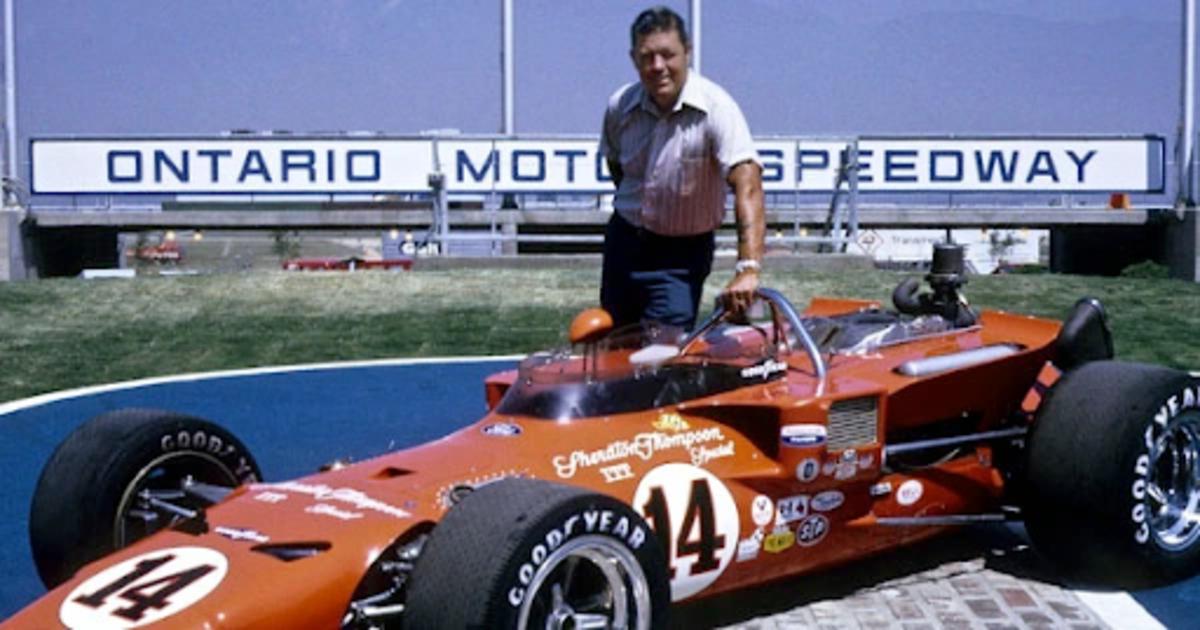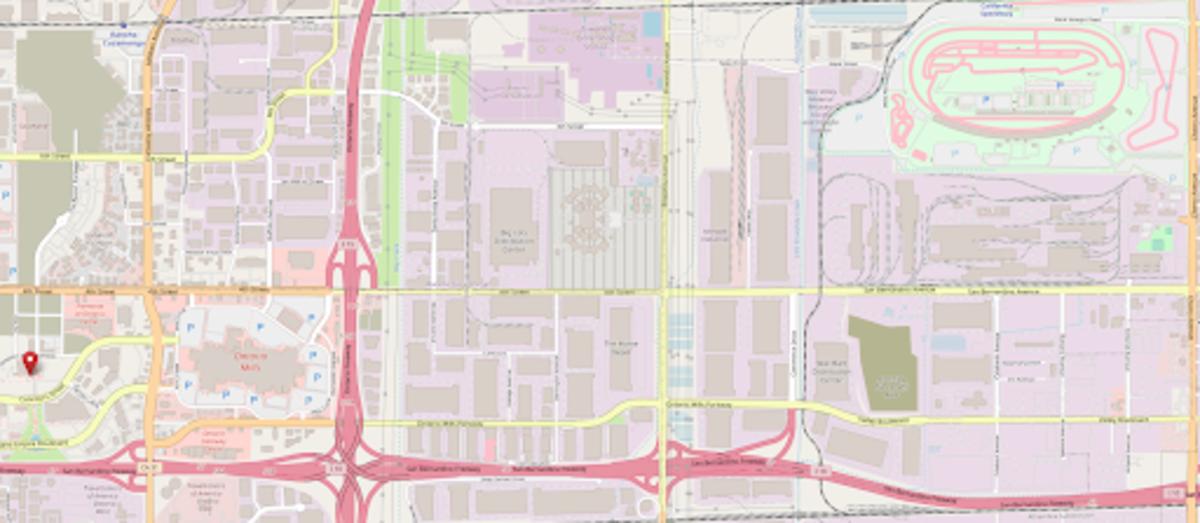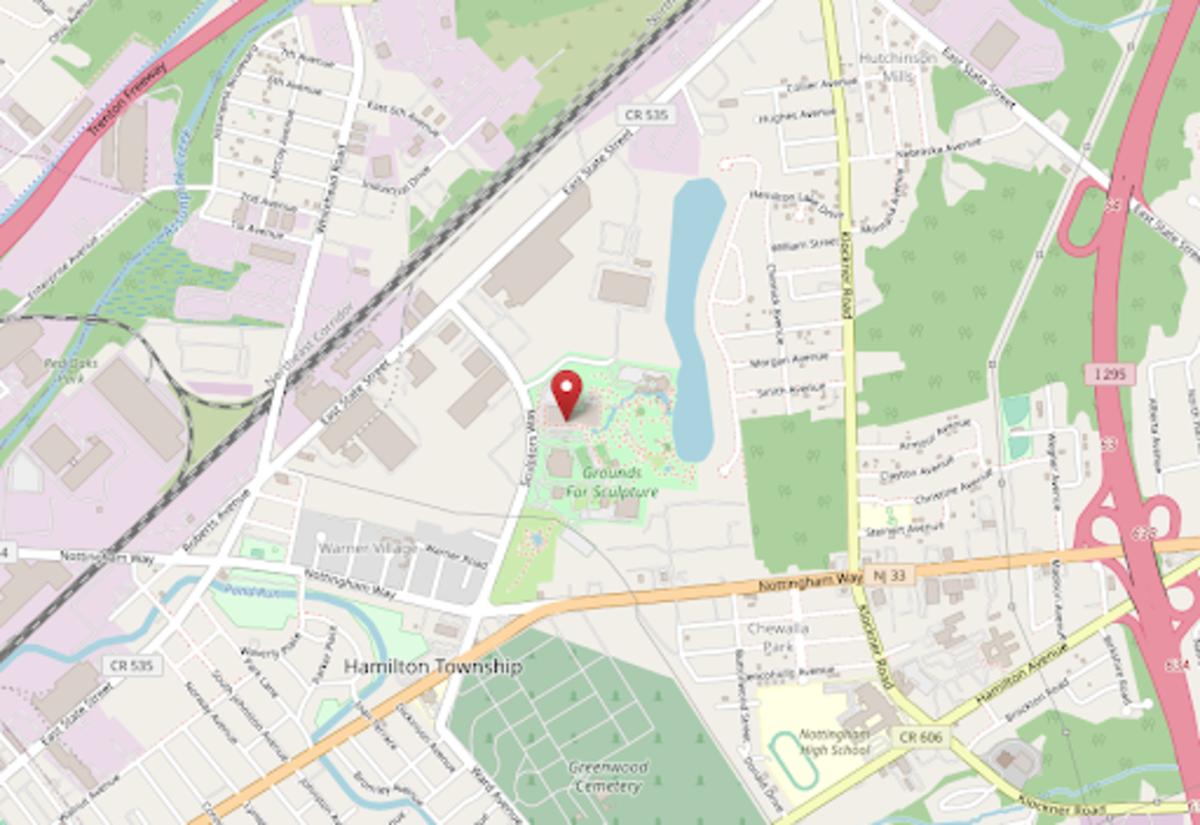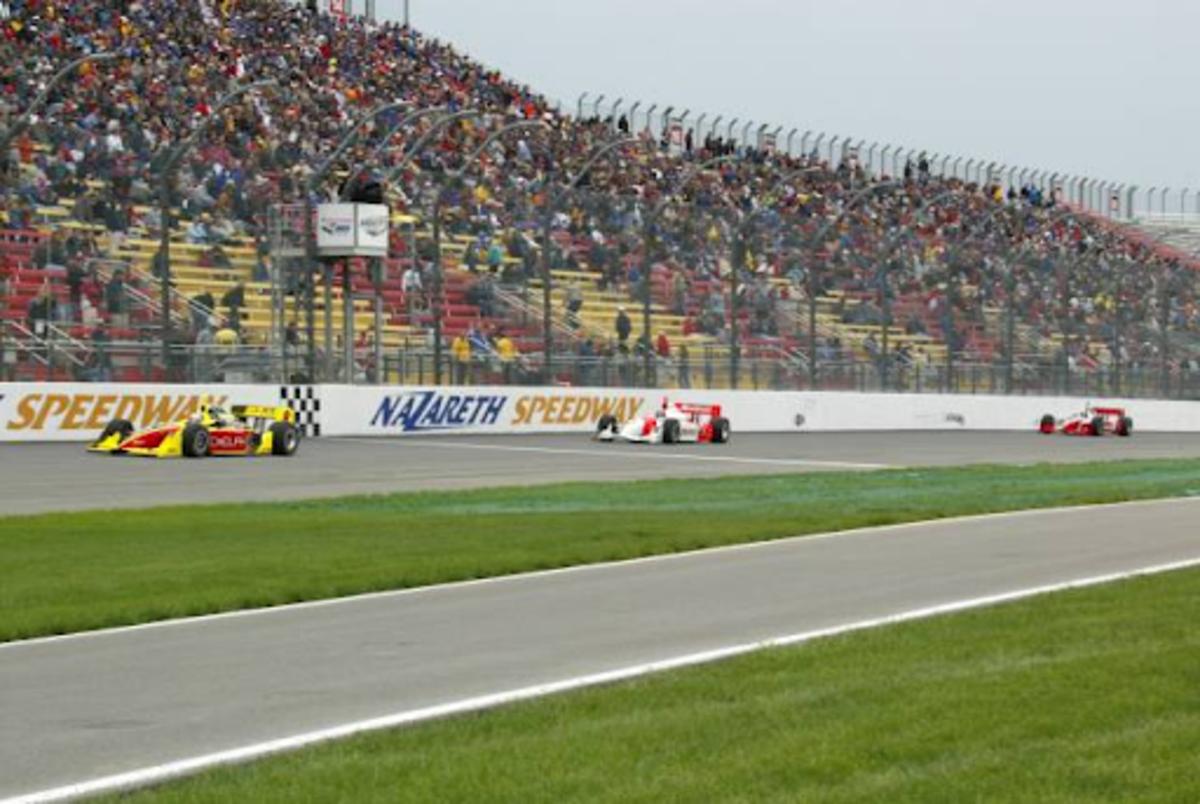Gone Forever, Part 1: 5 IndyCar Ovals That Disappeared from the Face of the Earth

For more than 60 years (not including the 106-year history of the Indianapolis 500), the various forms of the top open-wheel racing series in the United States -- USAC, CART, Champ Car, the Indy Racing League and since 2008, the merged IndyCar Series -- have raced on dozens of tracks in dozens of cities across the United States, Canada, Mexico, Brazil, Australia, Japan and other points beyond.
But, with time, and the changing tastes of racing fans, as well as needs of corporate sponsors, support of cities and overall finances, many of these locations have fallen off the schedule.
In this series, which we’re calling “Gone Forever,” we go one step further by exploring some of the most significant tracks that have gone beyond losing a scheduled date on the racing calendar - they no longer exist as racetracks at all, gone and all but forgotten in the minds of racing fans even today.
Our series starts with a look back at some bygone ovals. What was once the lynchpin of the IndyCar schedule, ovals have become an endangered species with only a handful on today’s IndyCar calendar. These ovals all had high potential to be important parts of their communities, and racing history, but ultimately fate had other plans.
Without any further ado, here are five key ovals that have taken their last checkered flag ever and the legacies that they leave behind:
*****************
Ontario Motor Speedway (1968-1981) (Approximate Location)

Final track configuration: 2.5-mile rectangular oval
First IndyCar race: 1970 (California 500, won by Jim McElreath -- watch highlights below)
Last IndyCar race: 1980 (California 500, won by Bobby Unser)
Now: Mixed-Use Residential and Commercial Development, including the nearby Ontario Motor Speedway Park
It was supposed to be the Indianapolis Motor Speedway of the West. Ontario Motor Speedway was built as an exact duplicate of the Indianapolis Motor Speedway at a cost of more than $25 million dollars. With the support of IMS owner Tony Hulman, a prime location in one of the biggest markets in America, the promising track opened in August 1970, and hosted NASCAR, Indycar (USAC and CART), NHRA drag racing, road racing and more.
The facility featured many state-of-the-art features that we take for granted at modern race tracks today including VIP club suites, great sightlines for fans from almost every seat, permanent bathroom facilities, and electronic scoring pylons that kept fans abreast of the standings in real time. It also featured an infield road course, and a drag strip, with a goal of appealing to a wide array of racing fans.
A.J. Foyt would ultimately win 7 races at Ontario, by far the most of any Indycar driver.
Ontario Motor Speedway. Ontario, California. Opened in 1970, closed 1980. 2.5m Indianapolis clone. #LostSpeedways pic.twitter.com/FuQEgfc3EN
— Dale Earnhardt Jr. (@DaleJr) April 1, 2021
The first California 500, won by Jim McElreath, was attended by 175,000 fans, and success looked secure. But almost immediately after opening, the track fell into financial trouble, defaulting on its rent in 1972. A consortium led by Indy 500 winner Parnelli Jones took over the lease in 1973, but by 1975, the California 500 was drawing only a third as many fans as the first year and even Jones was out.
The track owners ultimately defaulted on the $25 million in bonds used to build it in the late 1970s and just 10 years after opening to massive fanfare, the land hosting the track was sold to developers in December 1980. Today, very little exists of the old track, as urban explorers can attest to. The Toyota Arena was built in what was the infield for the track, and the rest of the land is a mixed-use residential and commercial complex called Piemonte.

Ironically enough, today’s Auto Club Speedway sits only a few miles away from where Ontario Motor Speedway was, and itself is going through challenges. In 2020, plans emerged to reduce the track from a 2-mile oval to a half-mile oval to allow for excess track land to be potentially sold and be redeveloped. However, these plans appear to be on hold as of this writing.
*****************
Trenton Motor Speedway (1900-1980) (Approximate Location)
Trenton Speedway was a 1.5-mile track....shaped like a kidney bean. Must have been a cool track...... pic.twitter.com/8bABMNAXke
— Steve Post (@ThePostman68) December 14, 2018
Final track configuration: 1.5-mile “kidney bean” shaped oval
First IndyCar race: 1949 (dirt, won by Myron Fohr), 1957 (paved, won by Pat O’ Connor)
Last Indycar race: 1979 (won by Rick Mears - watch highlights below)
Now: An art installation called Grounds for Sculpture, and the town of Hamilton Lakes
Racing began at the New Jersey State Fairgrounds in 1900 on a half-mile dirt oval, and the Trenton Speedway site would later expand to a 1-mile dirt oval in 1946, a paved one-mile oval in 1957, and finally end up in it’s final “kidney bean” 1.5-mile oval shape in 1969. Trenton would host IndyCar and NASCAR during its long run.

It was also one of the rare oval tracks where drivers actually turned right. When the track was to be expanded in the late 1960s, a stubborn property owner who refused to sell their land caused the track owners to divert the backstretch into the infield to bypass the offending property. Hence, a befuddling right turn in the middle of the back straightaway.
A.J. Foyt would ultimately log 41 starts at Trenton and win an incredible 12 times. Mario Andretti would win 7 times.
Dwindling crowds left the owner of the fairgrounds site to sell to investors in 1981 for about $750,000. Nothing remains of the track today, but Turn 1 at Pocono Raceway, was modeled as a tribute to Trenton's Turn 1 when first built in the 1960s.
*****************
Nazareth Speedway (1910-2004) (Location)

Final track configuration: 1-mile tri-oval
First Indycar race: 1968 (dirt, won by Al Unser), 1987 (paved, won by Michael Andretti (watch the race below):
Last Indycar race: 2004 (won by Dan Wheldon - watch the race below:
Now: Fate unclear, but cannot be reinstituted as a racetrack.
You would think being in the hometown of one of the most famous racing families, the Andretti’s, that Nazareth Speedway would always have a marquee date on the IndyCar schedule. First opened in the early 1900s, and with the first auto races being staged in 1910, Nazareth has a long history with speed. During its prime, it indeed was a big draw, in two forms - both as a dirt track in the 1940s through the 1960s and then a paved oval from 1986 until its closure in 2004.
After an initial period of decline, Roger Penske bought and renovated the facility in 1986, but when he sold his interest in racetracks to International Speedway Corporation in 1999, his ownership in Nazareth went with it.
Michael Andretti won the first IndyCar race on the paved track in 1987, and a guy named Scott Dixon recorded his first win there in 2001.
Dwindling race day crowds in 2002 and 2003 left ISC to close the track in 2004, giving its race dates to another ISC track, Watkins Glen, in New York State. Dan Wheldon won the last Indycar (then IRL) race in Nazareth in 2004.
17 years ago today, Dan Wheldon won the final race ever held at Nazareth Speedway. pic.twitter.com/UN8Dq5397Y
— INDYCAR on NBC (@IndyCaronNBC) August 29, 2021
Most of the track facilities were torn down in 2007 and large mounds of dirt were placed on the track surface to prevent its use. Vandalism and arson have taken place on the grounds since the track was closed, and even a petition to improve the visual of the track for online racing purposes has made the rounds.
As of this writing, the track lies closed and largely abandoned (see it now on Google Maps), as it was after new owner, David Jaindl purchased the land in 2016. Jaindl claims a “competition clause” in the sale contract precludes him from reopening the land as a racetrack, likely cementing Nazareth’s fate in racing history.
*****************
Walt Disney World Speedway (1995-2015) (Approximate Location)

Final track configuration: 1 mile tri-oval
First Indycar race: 1996 (won by Buzz Calkins - watch highlights below):
Last Indycar race: 2000 (won by Robbie Buhl - watch a replay below:)
Now: Magic Kingdom parking lot and access roads
Involved from the beginning of the Indy Racing League during the “CART/IRL” split, Walt Disney World Speedway actually hosted the first IRL event in January 1996.
Announced in early 1995, the track was built in the parking lot of the Magic Kingdom theme park by IMS Events engineers and most of the facilities were built to be assembled, and torn down after the races.
Initially successful (the 1996 race drew about 50,000 spectators), the track was not without its challenges.
The placement in the parking lot of one of the most visited theme parks in one of the biggest tourist destinations in the world seemed to be a recipe for success.
But in practical terms, the track location created transit challenges for the two sets of crowds that Disney had to manage - visitors to the Magic Kingdom theme park, and the visitors to the race - meaning one audience would likely be inconvenienced no matter what they did.
Driver safety also became a question as serious neck and back injuries to Sam Schmidt (paralyzed) and Davy Jones (broken neck that he later recovered from) happened in crashes at the track. The optics of these crashes clearly didn’t help the cause.
After just five IRL races, the end of Indy car racing at Walt Disney World Speedway came in 2001 when IRL and Disney couldn’t agree on a race date with the Super Bowl, just up the road in Tampa, expected to bring big crowds to the Disney Theme Parks and even more congestion around potential race days.
The end for the track itself finally came in 2015. The only tenants of the track at that point were the “Richard Petty Driving Experience,” which was left to find a new home.
Nothing remains of the former track today, though through Google Maps you can easily see the outline where the track used to be, and the “Lake Mickey” water feature, now overgrown with moss.
Sadly, these days, the only race driving you’ll be doing at Walt Disney World is at the popular Tomorrowland Speedway attraction at Magic Kingdom.
*****************
Texas World Speedway (1969-2017) (Approximate Location)
Final track configuration: 2-mile D-shaped superspeedway
First Indycar race: 1973 (won by Al Unser)
Last Indycar race: 1979 (won by A.J. Foyt)
Now: A housing development known as Southern Pointe
Once home to the unofficial fastest closed-course single lap in IndyCar racing history, Texas World Speedway in College Station, Texas (not to be confused with the modern-day Texas Motor Speedway located in Fort Worth, about 225 miles to the north) hosted a wide array of NASCAR and USAC races during the late 1970s and early 1980s.
Originally part of American Raceways Inc, which had dreams of a racing empire across America (they would own stakes in Riverside Raceway in California, Trenton Speedway, Michigan International Speedway and Atlanta Motor Speedway before going bankrupt in 1971), Texas World Speedway was built as a clone of Michigan International Speedway.
But like many other stories in racing lore, the “racing is an expensive business” challenge applied to TWS, which was doomed from the start. Races at Texas World Speedway never really drew huge crowds, and the facility quickly fell into disrepair.
Just 16 cars took part in the last Indycar race there as TWS became a battleground in the “split” of the era, as CART and USAC battled for control of open-wheel racing in the United States. A combined “Championship Racing League” event for 1980 was canceled when the fragile alliance between the two organizations collapsed, and Indy cars were never seen in a race at Texas World Speedway again (rumor has it the state of the facility also factored into the decision to cancel the race).
NASCAR ran its last race as TWS in 1981, and other than ARCA (which last raced in 1993) and a one-off IMSA race using the road course in 1996, major racing left the track essentially abandoned.
A.J. Foyt would win 4 IndyCar races there, and even win a twin 150 with one win in an Indy car, and one win in a stock car there in 1976 (on the same day that Niki Lauda’s near-fatal crash happened).
TWS's last major act was as a dumping ground for cars who were waiting to be scrapped after being damaged in Hurricane Harvey in 2017.
After years of conversations, plans and disrepair and neglect, Texas World Speedway was finally razed during the pandemic, with a housing complex called “Southern Pointe” taking over the land starting in 2019, with the press box and parts of the banking being demolished in early 2021.
*****************
Thanks for reading! Stay tuned for Part 2 in our Gone Forever series, where we explore some of the street circuits from IndyCar’s past that have been lost to history.
